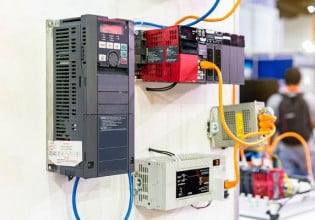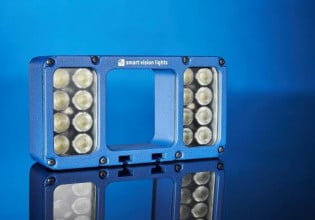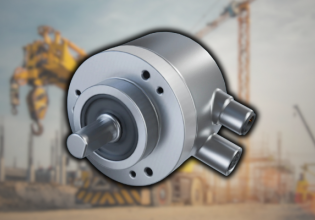The Art of Maintaining and Repairing Hydraulic Cylinders
Hydraulic cylinders and actuators can quickly move heavy objects and provide strong clamping forces. But when they break down, the effects can be catastrophic and the repairs costly and timely.
Hydraulic systems are used in many different industries to move or clamp heavy objects. A hydraulic system is similar to a pneumatic system, except that specialized hydraulic oil is used as the fluid medium instead of compressed air.
A pump or compact power pack assembly creates the required fluid pressure by pumping oil from a reservoir into the system.
Hoses and piping are used to transport the pressurized fluid to the different load devices, usually hydraulic cylinders and motors. Return lines are required from each device to return the oil back to the reservoir.
Those load devices that use the oil for different kinds of motion will eventually wear and break down. Replacing hydraulic components can be a messy job, with many hours of machine downtime. In the article, I’ll go over the causes of hydraulic cylinder wear and describe a few preventive and corrective methods to lengthen the life span of the cylinders.

Figure 1. Cutaway view of a hydraulic cylinder. Image used courtesy of Wikipedia
Common Hydraulic Problems
With pressurized fluid being the medium to allow a cylinder to extend or retract, keeping that fluid contained to the system is a common challenge for hydraulic systems. Fluid leakage can occur for many reasons: extreme temperatures, erosion of seals due to particles in the fluid, misalignment, or corrosion. When fluid starts to leak out of the system, the cylinder will not have the same power. Eventually, the entire hydraulic system will stop entirely. Below are some common sources that could result in a system leak.
Dirty Fluid - The fluid in a hydraulic system is the lifeblood of the system and needs to be clean and clear of air and water. Water does not mix with oil or air and will corrode unprotected components. While oil doesn’t compress, air certainly does, so when air gets into the hydraulic system, the air will compress, causing pump cavitation or damage to the cylinders themselves. Small particles that escape through the filter can cause erosion to seals and moving components. This erosion, over time, will cause leakage.
Extreme Temperatures - Hydraulic seals in cylinders are designed to work efficiently at a specific temperature. If the oil rises above the designed temperature, the seals that prevent leakage could start to fail. This failure could result in a violent release of high-pressure hot oil.
Misalignment - A hydraulic cylinder is typically used to move objects, and it’s linked to other moving parts. When the cylinder extends, these other moving parts need to pivot and slide with the cylinder in perfect alignment. The rod of a cylinder is made of hardened material that should never bend, so when there is a misalignment, the seals will wear on one side causing premature failure.

Figure 2. Technician repairing hydraulic hoses and fittings. Image used courtesy of Wikipedia
Preventing Fluid Systems Failures
It will come as no surprise to you that the solution to preventing these common problems is to maintain your equipment and use it in the recommended environment, but there are additional ways to determine when these problem sources should be scrutinized.
Contaminants
Filters have a life span and should be changed on a regular basis, but there are conditions where a filter might need maintenance before the recommended end-of-life. By measuring pressure before and after the filter, control systems can monitor and report failing filters before they become a problem.
Temperature
As the temperature of the fluid rises, the elasticity of the seals can change and could cause leakage. Oil coolers are the best method for reducing the temperature of the hydraulic fluid, and by adding a few temperature sensors to the system, an emergency shutdown can automatically occur, preventing damage to the equipment.
Corrosion
The rod of the hydraulic cylinder is made of hardened steel with a chrome finish on the outside. This hard chrome plating is further ground to a very accurate dimension with tight tolerancing. As the cylinder ages, the chrome plating will eventually wear off, and corrosion will start to occur on the rod, reducing the life of the cylinder. To prevent this common problem, perform regular visual checks on the equipment and look out for signs of corrosion or pitting of the cylinder rod.
Misalignment
Another source of corrosion, and ultimately damage to the overall system, comes from misalignments that cause more wear on one side of the rod vs. the other. Visually ensure that there are no scuff marks on the cylinder rod that indicate excessive friction, and look for uneven wear on the rod-eye or cap-end clevis.

Figure 3. Technicians adjusting hydraulic assembly brackets. Image used courtesy of Wikipedia
Repairing The Cylinder
Unfortunately, repairing a cylinder isn’t as simple as replacing a severed wire or putting a new nut and bolt onto a bracket. The finishes and tolerances are so tight that they are often beyond the scope of simple repair equipment. Preventing problems by identifying future failure signs can be the most important part of the process: prevent the issue, then you won’t need to repair it.
Depending on the size and extent of damage to your cylinder, you might want to take it to an accredited repair shop. Chrome plating damage or corrosion will require stripping away and replating of the surface, then grinding and polishing to very tight tolerances.
Seal damage can sometimes be easily replaced, provided the cylinder allows access to the seals through removable parts. Physical damage due to misalignment (bent shafts) might require welding and machining, so a repair shop will be required if an in-house staff isn’t available for such a repair.
Filters and regular oil changes can easily be done in the field in a timely manner, while other repairs will require the equipment to be shut down for some time. It’s best to focus on the recommended preventive maintenance, as insignificant as it might seem, in order to prevent bigger problems down the road.
Planning for Downtime
Because of the long repair times of some cylinders, it is always a good idea to have spares that can be quickly exchanged for damaged cylinders.
Featured image used courtesy of Adobe Stock







We renovated an oil rig with a lot of new hydraulic pipes. In one area someone did some grinding work on a steel frame near by without covering up the pipes. This created dozens of tiny holes in the stainless steel pipes.